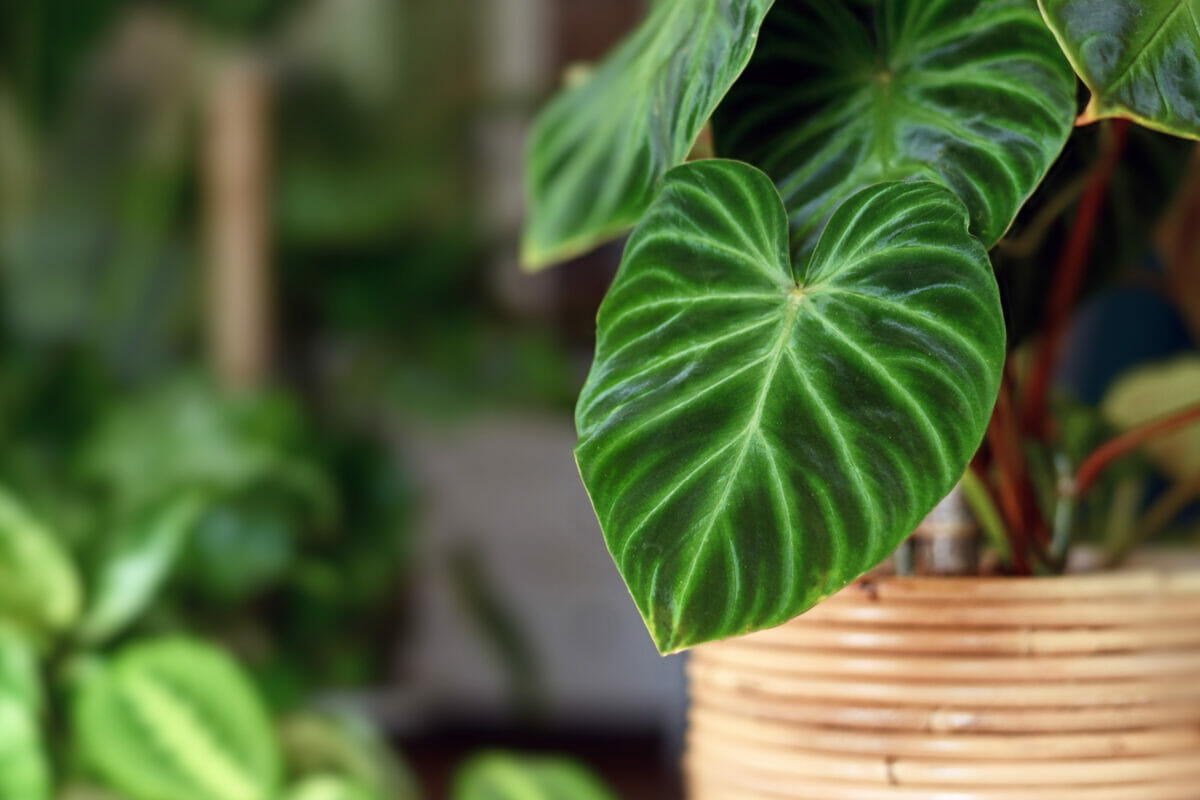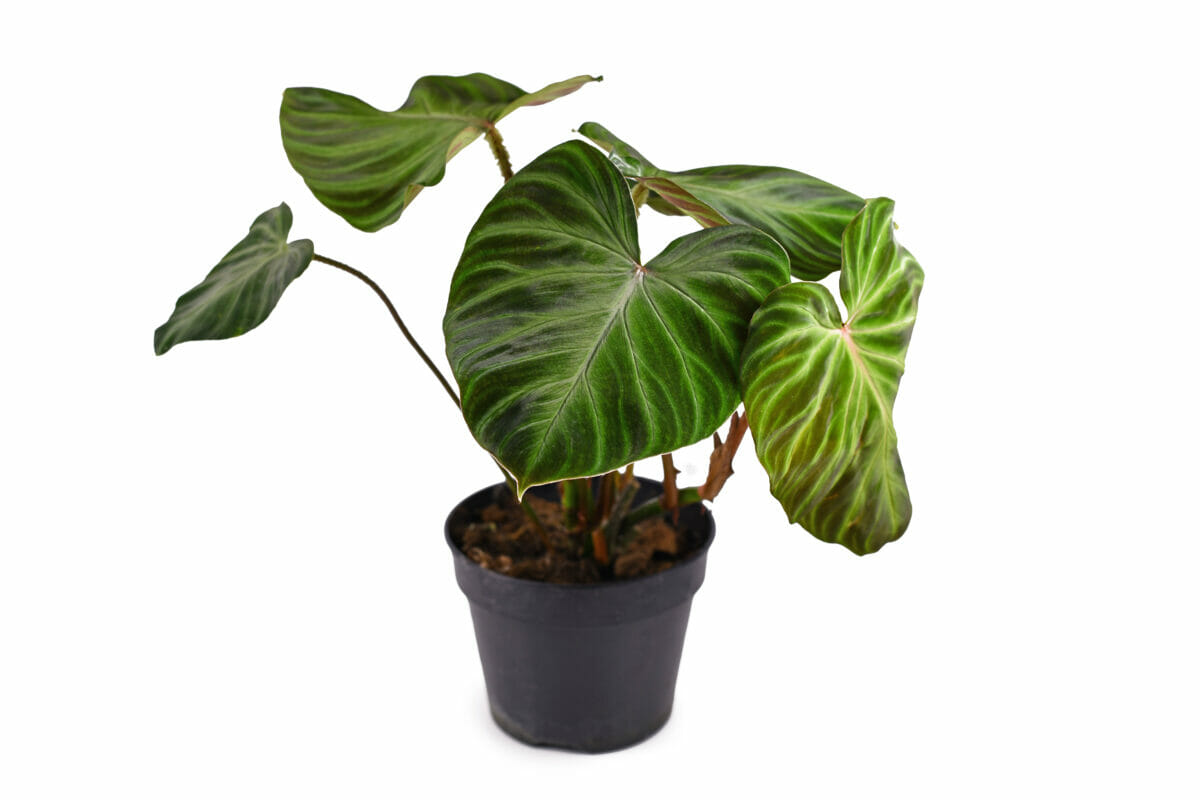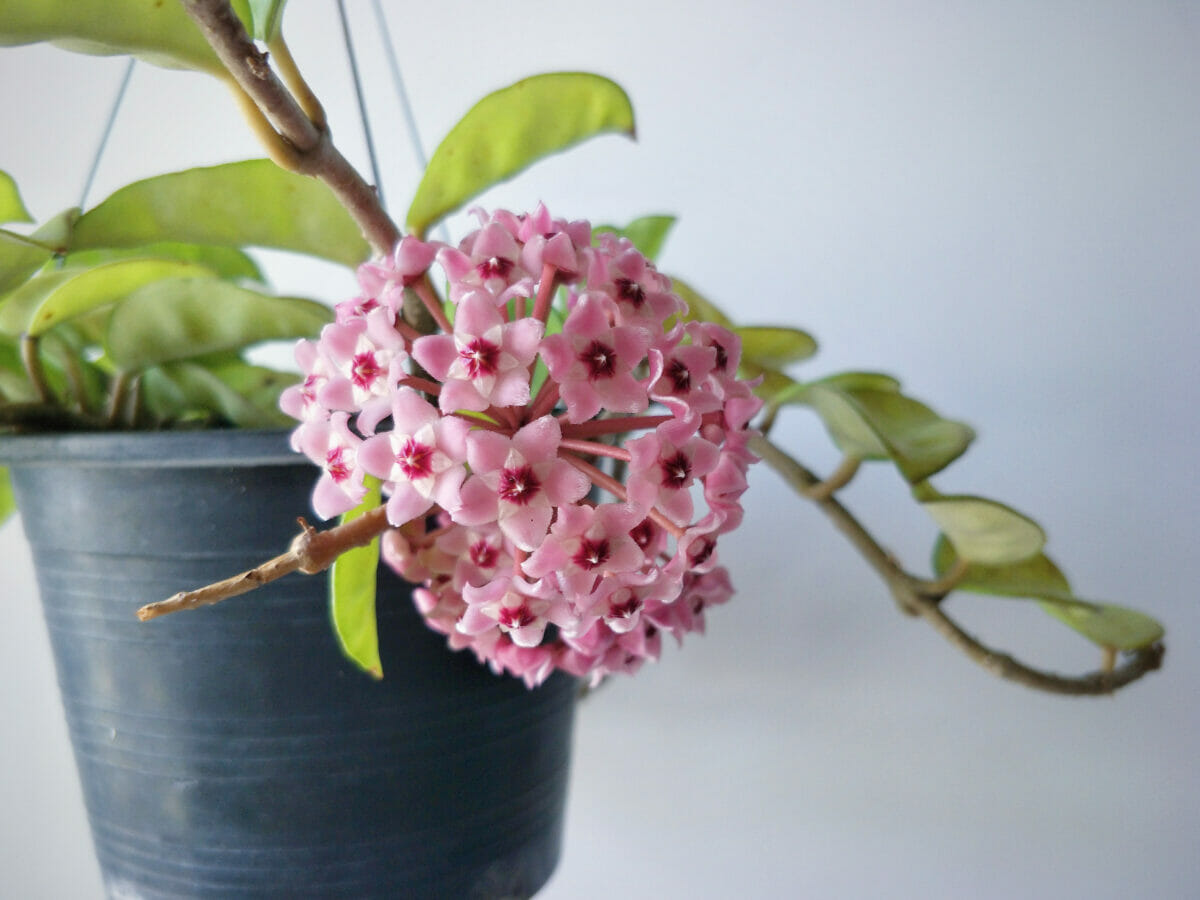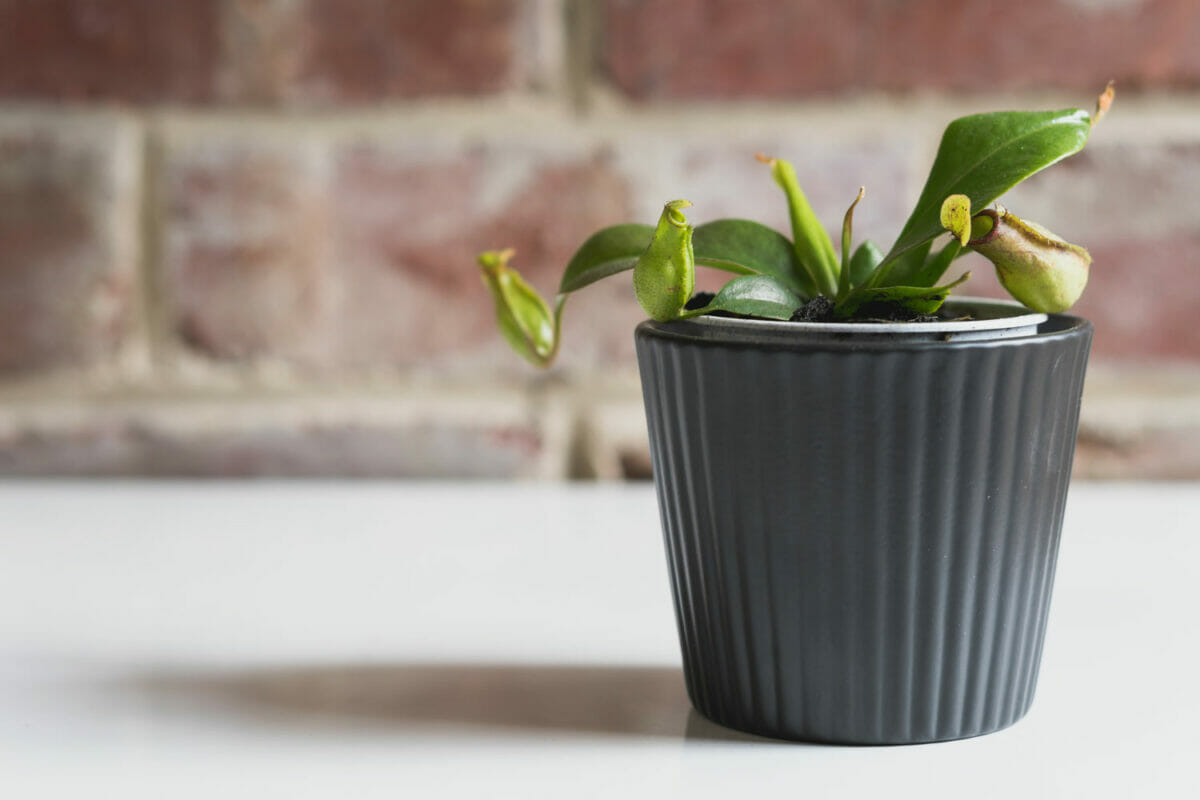5 Rare Plants That Are Surprisingly Easy to Care For
These stunners will be a special addition to your houseplant collection, without all the fuss.
5 Rare Plants That Are Surprisingly Easy to Care For
These stunners will be a special addition to your houseplant collection, without all the fuss.

Philodendrons are wildly popular houseplants, yet easy enough to care for.by Shadow Inspiration, Shutterstock
Houseplants are a little like rabbits. They have a tendency to multiply really quickly. You might bring home a little spider plant cutting to pop in some soil, and before you know it, you have a full-on windowsill garden.
No judgment. We’ve all been there.
But then you hit a snag. Your first snake plant, your cute little cactus, your squishy succulent, those plants were all easy to care for. Some light, not too much water, and they pretty much took care of themselves. When you start looking to expand your collection, that’s when things get more difficult. If you’re the kind of person who is excited about checking the PH levels of water and setting up hydroponic lamps for your rare tropical plants, that’s amazing. Continue on in good health. But for the rest of us (ahem) lazier plant owners, here are a few rare plants that will look amazing on your shelf but aren’t too fussy to care for.

Philodendron
There are hundreds of types of philodendron plants, and the vast majority are incredibly easy to care for. They need bright, indirect light, and you can let the soil dry out almost completely between waterings. The plants are also incredibly adaptable, so you can let the plant grow and trail on its own or direct it up a trellis. Most philodendrons also grow large leaves that look stunning, letting you take all the Instagram clout without breaking your back.

Hoya
Hoya is a tropical plant, but don’t let that throw you off. It is supremely easy to care for, and it can reward you with beautiful flowers with just a little bit of effort. Hoyas are sometimes called wax plants, because they produce dark green, waxy leaves and a lovely sweet scent. Hoyas should always have good drainage in their pots, as they’re sensitive to overwatering, but they do like to be on a schedule. Once you give them some bright light and find a watering routine, these guys will live forever.

Pitcher Plants
Now we’re talking. Pitcher plants are eye-catching, with colorful leaves that form tubes known as pitfall traps. Traps? That’s right, pitcher plants are carnivorous. These plants won’t just look cool, they’ll also help you get rid of unwanted flies and bugs that wander into your space. Even though they look finicky, pitchers are fairly adaptable to indoor environments. Most need bright light, and the soil should be kept moist but not drenched. You can also hand-feed a dried insect into their trap every few weeks, if they haven’t caught any themselves.

Air Plants
Talk about easy — these plants don’t even need soil. Out in nature, air plants usually grow on tree branches, and they develop thin leaves that spike out from the center of the plant. For indoor gardens, air plants do well in small glass terrariums, but they can also be placed nearly anywhere. They need indirect light and love a warm temperature. Keep them out of direct sun but near a window and they’ll be happy. As for watering, once a week or so, place the plant in a bowl or jar with enough water to submerge them. Leave them alone to soak for about 20 minutes, then let the plant drain on a towel before it goes back to its home. Voila!

Pilea
Also known as the Chinese money plant, pilea are originally from southwestern China. The plant is supposed to bring good luck, and it got its nickname because its leaves look like large coins. Now, they’re grown all over the world, as they’re easy to care for and look great. They sprout round, flat leaves off of a central core, and they tend to stack on top of each other. Keep these guys out of direct sunlight or their leaves could get scorched. The soil also needs to dry out in between waterings, so this is a perfect plant if you don’t want to make the rounds with a watering can every day. Their large leaves can get a little dusty, so every once in a while, give them a wipe down with a wet cloth and you’re good to go.
Follow us
This work is licensed under a Creative Commons Attribution-NoDerivatives 4.0 International License.
Want to republish a Modern Farmer story?
We are happy for Modern Farmer stories to be shared, and encourage you to republish our articles for your audience. When doing so, we ask that you follow these guidelines:
Please credit us and our writers
For the author byline, please use “Author Name, Modern Farmer.” At the top of our stories, if on the web, please include this text and link: “This story was originally published by Modern Farmer.”
Please make sure to include a link back to either our home page or the article URL.
At the bottom of the story, please include the following text:
“Modern Farmer is a nonprofit initiative dedicated to raising awareness and catalyzing action at the intersection of food, agriculture, and society. Read more at <link>Modern Farmer</link>.”
Use our widget
We’d like to be able to track our stories, so we ask that if you republish our content, you do so using our widget (located on the left hand side of the article). The HTML code has a built-in tracker that tells us the data and domain where the story was published, as well as view counts.
Check the image requirements
It’s your responsibility to confirm you're licensed to republish images in our articles. Some images, such as those from commercial providers, don't allow their images to be republished without permission or payment. Copyright terms are generally listed in the image caption and attribution. You are welcome to omit our images or substitute with your own. Charts and interactive graphics follow the same rules.
Don’t change too much. Or, ask us first.
Articles must be republished in their entirety. It’s okay to change references to time (“today” to “yesterday”) or location (“Iowa City, IA” to “here”). But please keep everything else the same.
If you feel strongly that a more material edit needs to be made, get in touch with us at [email protected]. We’re happy to discuss it with the original author, but we must have prior approval for changes before publication.
Special cases
Extracts. You may run the first few lines or paragraphs of the article and then say: “Read the full article at Modern Farmer” with a link back to the original article.
Quotes. You may quote authors provided you include a link back to the article URL.
Translations. These require writer approval. To inquire about translation of a Modern Farmer article, contact us at [email protected]
Signed consent / copyright release forms. These are not required, provided you are following these guidelines.
Print. Articles can be republished in print under these same rules, with the exception that you do not need to include the links.
Tag us
When sharing the story on social media, please tag us using the following: - Twitter (@ModFarm) - Facebook (@ModernFarmerMedia) - Instagram (@modfarm)
Use our content respectfully
Modern Farmer is a nonprofit and as such we share our content for free and in good faith in order to reach new audiences. Respectfully,
No selling ads against our stories. It’s okay to put our stories on pages with ads.
Don’t republish our material wholesale, or automatically; you need to select stories to be republished individually.
You have no rights to sell, license, syndicate, or otherwise represent yourself as the authorized owner of our material to any third parties. This means that you cannot actively publish or submit our work for syndication to third party platforms or apps like Apple News or Google News. We understand that publishers cannot fully control when certain third parties automatically summarize or crawl content from publishers’ own sites.
Keep in touch
We want to hear from you if you love Modern Farmer content, have a collaboration idea, or anything else to share. As a nonprofit outlet, we work in service of our community and are always open to comments, feedback, and ideas. Contact us at [email protected].by Emily Baron Cadloff, Modern Farmer
September 5, 2021
Modern Farmer Weekly
Solutions Hub
Innovations, ideas and inspiration. Actionable solutions for a resilient food system.
ExploreExplore other topics
Share With Us
We want to hear from Modern Farmer readers who have thoughtful commentary, actionable solutions, or helpful ideas to share.
SubmitNecessary cookies are absolutely essential for the website to function properly. This category only includes cookies that ensures basic functionalities and security features of the website. These cookies do not store any personal information.
Any cookies that may not be particularly necessary for the website to function and are used specifically to collect user personal data via analytics, ads, other embedded contents are termed as non-necessary cookies.
What are the 5 plants? The article has 5 genuses of plants that have hundreds of cultivars.
What are the rare plants? All listed are common plants you can buy at Home Depot.
It’s articles like this that make people wonder what they did wrong when their pricey plants die, because “they were supposed to be easy”. Yes, some philodendron are easy, but not all. I definitely wouldn’t recommend someone start off with a verrucosum, like they have so prominently displayed on this article. Hoyas can be the ultimate drama queen and aren’t necessary idea for the “lazy plant parent”. I would strongly suggest a new plant paremt avoid pitcher plants, which will die if you water them with tap water, and they need a humid environment or daily misting (plus you need… Read more »
Does the author have many houseplants? Maybe not with the ambiguity in this article
All of these are common plants that you can find in most nurseries and/or agro shops. Pitcher plants and hoyas can be quite fussy. This article is completely useless. Alex is right. Do not use it for rare houseplants.
Looking forward to finding some new houseplants. Looks like it’s going to be fun.
I have the pilea and it’s been such a great accent to the home. It grows like crazy and I love the way the leaves stack on each other. Mine doesn’t mind the sun and can go about a week an half until it needs more water. I will buy another eventually just to each it grow!
I hate this type of article, not one one of these plants are considered rare. It want written for 10 year olds
Oh man pitcher plants are awesome BUT you need to use rain water or distilled water (not tap, not melted snow); and they’re planted in peat, not dirt. If the traps are dry, you should put some water in with an eye dropper. Freeze dried bloodworms for Betta fish work great if they havent “eaten” in awhile. The ones in the picture, are a type of nepenthes and should be water from above. Sarracenia can be bottom or top watered. They’re cool plants but yikes there is not enough info here and someone could be disappointed when their pitcher plant… Read more »
The Chinese money type is of much interest to me. It’s a lovely plant.
Need more information about monet tree plant.